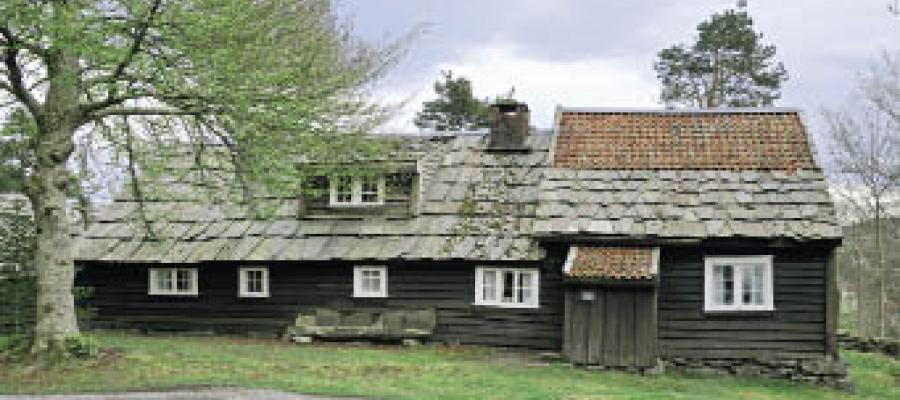Catharine Kølle, “Hesthammer”, undated. (Helge Sunde, owner: Universitetsmuseet i Bergen (B 2436b, 11,3x8,9)) (utsnitt)
Civil Servants in Small Societies 1650 – 1850
The white painted Rococo building on Hesthamar, the magistrate’s estate just north of Utne in Hardanger, with its steep, pointed gable roof stands out in the landscape. This beautiful and well preserved official estate house from the early 18th century stands there as a witness to a period when civil servants were powerful and stood on the top rungs of the social ladder.
In Hordaland there are many such official estate houses, such as the Captain’s Estate at Fet in Uskedalen, an example of well proportioned classic Bergen style, or the official estate house of the company chief at Undarheim in Husnes, both from the second half of the 18th century. Somewhat smaller, but still bigger than an ordinary farmhouse is the main building on the rectory in Vikøy in Hardanger or the dwelling house from the bailiff’s estate at Sørhuglo which stands today in the Sunnhordland Folk Museum at Stord.
Hammarhaug Bailiff’s estate in Ølvebygda, painted by Anders Askevold in 1860. Six peasant holdings spread around in the outlying areas belonged to this estate. Previously Hammarhaug belonged to Tysnes Municipality. ("Fra Hammerhaug". Photo: J. Lathion, owner: Nasjonalgalleriet (NG 520 i, olje på papir oppklebet på papp-plate 34,5x47)).
The social distance between the civil servants and the common people emerges in the colourful figures from popular art. The officer: “I fight for all of you”. The Vicar: “I teach all of you”, The Farmer: “I struggle for all of you”, The seaman: “I must plough the blue waves whilst the Officer and the priest sleep in tranquillity”. Burgundøy,. Kvinnherad. (Nils Georg Brekke).







